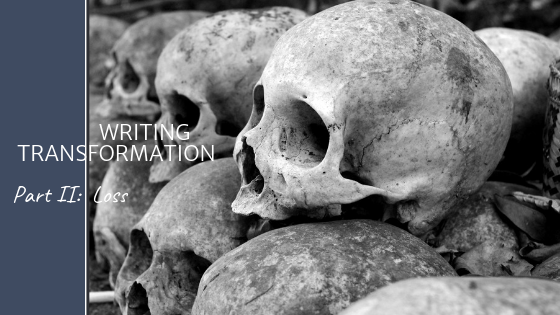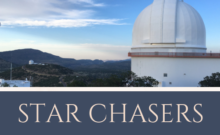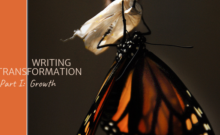In my last post on transformation, I gave you a glimpse into my own personal growth story to explore the ways in which metamorphosis allows self-discovery and positive change.
In this post, I want to talk a bit about the darker side: transformation as annihilation.
I used a provocative death image for this post, but I could just as easily have stuck with my butterfly motif. We see the butterfly as this beautiful image of growth-transformation — a caterpillar trades its humble and lowly lowly existence as a caterpillar for the brilliant wings and beauty of the butterfly.
But what happens in that middle part? The part when Eric Carle’s Very Hungry Caterpillar stays inside the cocoon for two weeks?

It dissolves itself.
If you want to read in more detail about this process, this is a great article. But in brief, the caterpillar digests itself, leaving just the remnants of cell groupings (imaginal discs) that will form the foundational structures for the mature insect. Those structures grow and develop using the caterpillar goo leftover from the dissolving process.
I see why Eric Carle left it at hiding out for two weeks. Self-dissolution and consumption isn’t so much fun for a kids’ book.
But it’s freaking awesome for a horror movie.
Loss of Self
Metamorphosis stories are nothing new to humankind. I honestly think our fascination with transformation-as-loss-of-self stories has to be coded into our DNA. These types of stories span centuries, places, and cultures.
In the ancient mythologies, there are so many stories that involve metamorphosis as the gods’ punishment for mortals who misbehave. It’s the fate worse than death, right? Cross the gods and they strip you of everything that makes you human…and everything that makes you you.
The Arachne myth is a personal favorite of mine. (You can look for a short story coming soon that uses this myth as its backbone!) Arachne is a master craftswoman. And because weaving and poetry are so closely connected (the Greek word poesis means “weaving”, after all), I kind of think of her as the mother poet. In any case, Arachne gets it into her mind to challenge the goddess of weaving, Athene, to a contest.
I’m not really sure what she was thinking. You don’t challenge the gods and expect to win…or even survive. But she believes in herself and her craft enough to try anyway. I think you might know the end of the story.

The power of transforming humans into other creatures is also associated with wizards like Merlin and Gandalf. This is a super-natural, but not necessarily divine, power.
The divine power–what we might associate with God–is concerned with resurrection. This is a restoration of what makes us most ourselves: our physical bodies, our immortal souls, our memories, our love.
The dark power of transformation is concerned with destruction, dissolution, detachment, break-down.
Eternal Torment
Perhaps nowhere is this more clearly demonstrated than in Cantos 24 and 25 of Dante’s Inferno. Dante uses transformation of the most horrific kind as the eternal punishment for thieves in his vision of Hell. He describes his unique contribution to metamorphosis literature as this: it is
to transmute two natures, face to face, so that / both forms were ready to exchange their matter.
Inferno 25.101-102, trans. Allen Mandelbaum
These are thieves, so — following Dante’s logic of contrapasso (a similarity between sin and torment) — they are constantly and for all eternity stolen from. And what they lose is what is most precious, and the only thing they have left in Hell: their own individual identity.
This is the inspiration for my sci-fi horror script, Blur.
The Crucible
Space is a great crucible. It forces people into a tiny little human oasis in the vast emptiness. In Blur, my goal is to play with limits and boundaries of all kinds and to shrink the crucible until it is as narrow as possible: within the character’s own mind.
My own battle with anxiety has taught me that there can be no more frightening place than the wreckage of a non-existent reality you create for yourself in your own head. What if your greatest fear became manifest in physical form…and then hunted you and everyone around you with the sole purpose of annihilating your identity through metamorphosis?
That’s the hypothetical I used to build this story.
I also play with transformation-as-loss and the mental landscape in my sci-fi thriller novel Final Origin. If somehow our past makes us who we are, and we lose our connection to our past, do we lose ourselves? What exactly do we lose if we lose this connection? Can we just exist in a constant now that has no reference to a past or a future? Or would it drive us mad?
Ultimately the question for both stories is the same: what is it that makes us most truly ourselves?
Stories where characters become something other push our understanding of our core identity as individuals to the limits. I believe in growth. I believe in resurrection. And I believe that each of us has a true self…kind of like those imaginal discs that form the foundation of the adult butterfly. But, like the butterfly, sometimes we have to die somehow to reveal ourselves.
So, here’s the question. Should we fear the “death” experience if it brings us closer to our true selves? How do we know when it’s time to shed the things that are keeping us from being the people we were made to be? What do you think?
Peace,
S.K.




Leave a Comment